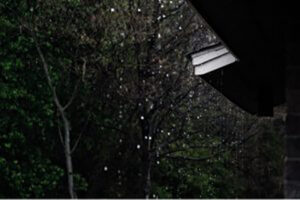Common Hidden Storm Damage
There’s nothing like a good storm to really give your house’s construction a run for its money.
If you live in an area that’s prone to experiencing storms and extreme weather, it’s high time you began checking your home for hidden storm damage.
Storms have the power to shake your house to its very core. Below are some common examples of hidden storm damage:

Roof Damage
If you live in a house and not an apartment, checking the roof should be your number one priority after a major storm. Unfortunately, rain and windstorms can cause surrounding objects and debris to fall on your roof. This may include heavy branches and loose concrete that could have fallen off nearby buildings.
These items can leave a dent on your roof or, at the very least, can displace loose tiles. Be sure to check for any new dents, holes, or fissures that may have appeared up there after a storm.
Damaged roofs make way for water to seep into your living space below. If a heavier object has fallen overhead, it could even have taken a toll on the concrete and have made it easier for it to collapse after future storms.
Hidden Water Damage
Sometimes, rainwater finds a way inside. Seepage can cause many unwanted negative side-effects like mold and mildew. It can also prompt fungal growth like black mold, which is often toxic when inhaled and can seriously damage both your health and the internal infrastructure of your home.
Try checking the corners of your windowpane for new mold or fungal growth. If your window’s glass has begun to fog up, it may be a sign that hidden fungal growth is happening in the area.
Yellow, brown, or black discoloration in areas around your living space could indicate hidden water damage, so be sure to keep an eye out for any such changes. You may need to repaint or replace any discolored areas.
If your basement, attic, garage, or any other part of your house that’s sealed off begins to smell odd, or if the air within it always feels damp, you may want to check for hidden water damage or fungal growth. Seepage can also make your wallpaper and paint crack and peel, so watch out for any telltale signs! You can usually spot these signals within 48 hours of the storm’s passing.
External Wall Gutters
Have your gutters suddenly began clogging? This could be a sign that there’s something stuck in your external wall gutters, like a small branch, leaves, or stones. Try examining your external gutters to check if the storm has left a negative impact upon them.
Wooden Floorboard Contamination
When it comes to rainwater and wood mixing, you can never expect anything good.
Be sure to check your wooden floorboards for any telltale signs of water damage, including wood puffiness and cracking. If you find these signs, contact your local floor carpenter ASAP!
Final Thoughts
Storms are common occurrences in many parts of the world but can leave unobvious signs of damage all-around your house. Luckily, there are many ways in which you can check your home for common hidden storm damage after a spell of bad weather! If you need help with storm damage, never fear! Reach out to the professionals at Integrity Restoration by going to our website or calling (770) 966-9987.

